Opinion & analysis
Shrugging the burden of heritage
Published
8 years agoon
By

~By Nikhil Kumar
We all know of a company that came to trade and went on to occupy a sub-continent. Now, we have companies that are being led by the government to befriend India’s heritage. Monument Mitras, as they are being called, will not only offer friendship, but also parenthood. An 80-year-old parent will adopt a 370-year-old child. There are other parents in line who are themselves 3-year-old but carry the wherewithal to adopt 2000-year-old caves. Their courage and ambition is applause-worthy.
The Minister of Tourism, KJ Alphons, on his personal website, has a quote that sounds like it was drafted by some rookie staff: “Don’t dream like an ant; dream like an elephant- really BIG.” One must marvel at the pithy beauty of this sentence and the vastness of ideas hidden in it. Alphons cannot but see India’s heritage as a milch cow. In a recent interview, he said: “for me, tourism is employment and big money”. Both worthy causes. Perhaps what hasn’t crossed his mind is that in the battle for such worthy causes, the casualty might be the milch cow.
The minister expects that the number of tourists will increase manifold if our heritages sites were to be cleaner, had amenities like toilets, wi-fi, souvenir shops, and had been landscaped. This conclusion, one would expect, would have arisen from an assessment or a study, but there isn’t any sign of it. A Parliamentary Standing Committee on Tourism seems to have welcomed the initiative taken by the government and recommended that “under the Corporate Social Responsibility (CSR) major corporate may be compelled to adopt heritage sites”.
None of the thirty one members of this committee which has representatives from all political parties in Parliament have any relevant expertise in diagnosing the ailment and therefore definitely none in providing an appropriate solution. Politicians are a class of people who know everything; therefore we must listen to them. There are also some editors and columnists, like Shekhar Gupta and Barkha Dutt, who know everything and we must listen to them as well. But, as Marx’s favourite maixm goes: De omnibus dubitandum. Everything must be doubted. And everything must be questioned.
Now, since there is no diagnostic study and we only have sincere words from Alphons, the Standing Committee, and some columnists espousing the innovativeness of the grand scheme, let us elaborate on what ‘Adopt a Heritage’ really means.
According to the recommendations of the Parliamentary Standing Committee: “the detailed plans for improvement of infrastructure and basic amenities have to be laid down by the Ministry/Govt. agencies and it should not be left at the discretion of the organization which is adopting the Heritage sites”. The website and project guidelines of the scheme variously says: (a) the project plans to entrust heritage sites/monuments and other tourist sites to private sector companies, public sector companies and individuals for the development of tourist amenities; (b)The project entails to handover heritage sites and monuments for adoption to the private and public sector companies and individuals (who would be known as “Monument Mitras”) for providing basic amenities and complete operation and maintenance (O&M) initially for the 5 years subject to review at any time, regular monitoring and feedback mechanism from all the stakeholders including tourists.
Between the ‘entrust’ and the ‘handover’, between the idea and the reality, between the conception and the creation, falls the shadow.
The problems in the scheme are too many to be ignored. Corporations and individuals with no experience and relevance have expressed their interest in adopting the listed heritage sites. The expression of interest will be assessed by a committee basis a vision document presented by the company. The committee is formed of senior officers from the ministries of Tourism and Culture, and the Archaeological Survey of India. Given the number of sites, it is unlikely that the committee will have the bandwidth to go through the nitty-gritties of the vision document. What we are getting is two sets of people, with very limited knowledge of a subject that needs patience and detailed understanding, deciding on the future of our heritage sites.
Let us take the example of Adham Khan’s tomb, which lies near the very busy area of Mehrauli in the national capital. There is a bus stand, several hotels, shops and sundry houses nearby. The monument does not have any amenities like toilet, souvenir shop, wi-fi connection, and is not landscaped. New signage were put up some 6-7 years ago and they have already gone. They were installed across several monuments by a steel company and nearly all of them were promptly picked and sold as scrap by thieves. The tomb of Adham Khan, Mughal emperor Akbar’s foster brother, is built on a raised platform and doesn’t have space for a toilet or a souvenir shop. The surrounding area of the tomb doesn’t lend itself to landscaping. What then will be the task of the Monument Mitra? Will they build a toilet inside the monument?
The fact is the Monument Mitra scheme has nothing to show for conservation of our natural and built heritage. There isn’t any clause to have conservationists on board either. Monument Mitras will develop a vision based on their imagination, submit it to ASI or the relevant body, who will assess and approve the work. Thereafter, the committee will monitor the ongoing work. The government might say here that conservationists are not required, as the Monument Mitras are only taking care of the amenities. But, shouldn’t the building of amenities, which will be in the same area as the monument, involve conservationists?
Given the situation, shouldn’t it be the ASI that should assess the requirements and ask for intervention? This topsy-turvy way of drafting a policy makes one wonder whether it was thought through by the government or was it the outcome of years of corporate advocacy.
Doubtless, corporations are present in every sphere of life and they are thought to be more efficient and devoted to their task. The government, also, has shown an inordinate trust in the industry whether it is in the matter of education, or health, and now heritage. A Business Standard editorial suggested that Public Private Partnerships (PPPs) is a positive way forward for the upkeep of our heritage. Yet, data shows very few PPPs have worked in India. Almost all the PPPs suffer from lack of coordination and gaps in communication. With four parties (the ministries of Toursim and Culture, the ASI and the company) involved in the ‘Adopt a Heritage’ scheme, it is not a hard guess what the denouement will be.
This government and this scheme believe in a set idea of how a heritage sites should look like. When a minister like Alphons visits one, he is surprised that the place he imagined, is not so, and that disappoints him. He is like the British who did not get the idea of a Mughal garden and had all the trees of Taj Mahal replaced by grass because trees intruded with the wholesome view. Alphons must change every heritage site to suit his idea of tourism. Our natural heritage, therefore, must be landscaped, the forests must not be unruly, the caves bright, the rivers disciplined and fronted. For this, he wants the ASI to be less conservative; his and his leader’s politics notwithstanding.
Much has been said about the ASI’s incompetence. But who is to blame for it? Celebrated historian Narayani Gupta has pointed out to the years of negligence in evolving a culture of archaeological studies, developing jobs for historians and conservationists.
Despite severe lack of financial assistance for years, the ASI has made efforts, even if only in spurts. A good example is the restoration of the Bateshwara group of temples near Gwalior. But that too had to be left incomplete because of lack of money. Then, there are, of course, bloopers like the plastering up of the Chatta Chowk in Red Fort, or the painting of the Sabz Burj blue. The ASI needs support, encouragement and nurturing, as do students of history, architecture, conservation, and associated subjects. Placing a corporation instead of a professional institution cannot be the solution.
The slow death of heritage in India is gut-wrenching. The Monument Mitra scheme only exacerbates this pain. It seems as if the state wants to shrug off the burden of being the custodian of India’s heritage. Already, our culture is evermore under invidious pressure and in forced evanescence under this dispensation. With the physical reminder of it also under threat, we as a society must be vigilant and must raise our voice. This government is unlikely to make any serious efforts towards preservation of heritage and there is scant chance that companies with their quaestuarian agenda will do any better.
Nikhil Kumar is a heritage enthusiast. He tweets at @niksez
You may like
-
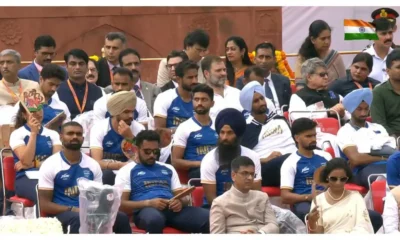

Rahul Gandhi attends 78th Independence Day celebrations at Red Fort as Leader of Opposition
-


Two Hindu outfit workers arrested for offering Gangajal at Taj Mahal; video goes viral
-


Parakram Diwas: PM Modi pays tribute to Subhas Chandra Bose, to attend celebrations at Red Fort today
-
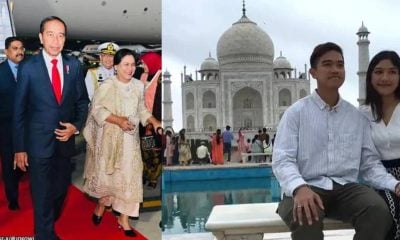

Watch: Indonesian President’s son Kaesang Pangarep, his wife visit Taj Mahal as India hosts G20 Summit
-


Congress President Mallikarjun Kharge skips PM Modi’s I-Day speech at Red Fort
-
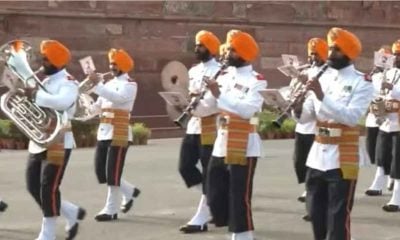

New Delhi: Armed forces conduct full dress rehearsal at the Red Fort
Opinion & analysis
Never say never again: Nitish Kumar’s expertise at hoodwinking allies shines through!
Nitish Kumar does it again!
Published
3 years agoon
August 9, 2022By

By Vikram Kilpady
Possibly the first state government to fall after the ascendance of the Modi-fied BJP without that party’s hand in the machinations has just shaken up the political landscape in Bihar, and the country. Nitish Kumar has pulled the rug from under the feet of the party. But since history has seen several turns first as a tragedy then as a farce, as noted by Hegel and Marx, Nitish Kumar possibly has the last laugh since he’s done the tragedy-farce duo twice. First, with the Rashtriya Janata Dal and, now, with the BJP, which among its many leaders has one man who gets called Chanakya way too often.
Once the party with a difference, the BJP has mastered the game of overturning elected governments; Madhya Pradesh where a maharajah switched to his aunt’s party, twice in Goa where elected Congress MLAs found faith in a new boss, Maharashtra where the cadre-strong Shiv Sena was ripped apart by a minister’s ambition, Karnataka where Operation Lotus blossomed first and spread its petals across the country.
Soon after the Modi magic of 2014, the dispirited opposition found new hope in the victory of Nitish Kumar and Lalu Yadav in the Bihar elections of 2015. But that was short-lived, Nitish found himself stifled by the ambition of Tejashwi Yadav and changed his mind, walking back to the BJP, which was eager to support him.
The 2020 election had the writing on the wall written in a more legible hand. The BJP won 74 seats, just one short of the party with the most seats, the RJD, which won 75. Nitish Kumar came third with 43 seats. The BJP was gaining at the cost of the Janata Dal United, which beat down Chirag Paswan’s rhetoric but couldn’t manage enough MLAs. The national party cannibalised its partner several times over throughout their association. The symbiosis of the initial years under Vajpayee was becoming a brain and brawn drain for the JDU. The election results were not free from controversy though, with the RJD alleging ballot boxes were changed in the middle of the night. The elections may have been won by the BJP and Nitish Kumar, helped by the image of Prime Minister Narendra Modi, but politics is not just platitudes, it also involves dirty work.
The use of RCP Singh by the BJP pointed at the potential of a Shiv Sena redux in the JDU, prompting the old fox to return to familiar Janata buddies, though once stabbed and all. But what is politics without the choosing of strange bedfellows, even if it borders on promiscuity and worse.
Read Also: Bihar BJP accuses Nitish Kumar of betraying Bihar people
The other angle to see the Bihar turn is from the lens of national politics. The idea of a country rid of the primary opposition party, aka becoming Congressmukt Bharat, has gained popular acceptance among the many for whom democracy is just voting in a new government. The turning of the Congress from its trademark white kurta to black attire was seen as a gimmick by the mainstream media. Far from a gimmick, the party was using what it encountered in Tamil Nadu where it rides on an ally’s stronger connect. The DMK’s parent, the Dravidar Kazhagam and its offshoots, still wears black shirts in protest against the idea of a homogenous India smearing over the vast differences between the country’s many constituents. With Hindutva becoming that all-unifying glue being applied by the BJP across the length and breadth of India, the Congress’s choice of black shows a new savvy.
Covid may have eclipsed the economy but many other slights and the worsening employment situation have India on uneven terrain. The Centre has to hold, but with accountability of successive state governments now enveloped buried in the image of the much-sought-after Strongman, an image that papered over the stark inadequacies of his administration, and won him and his party elections handsomely. The country was wearily dragging its battered economic self for another election some two years away. Nitish Kumar’s somersault has brought realpolitik back into the mix but investing all hope in serial side-switchers can be harmful for one’s emotions and well-being.
To be a rock for the Opposition, Nitish Kumar should not roll. But can old dogs learn new tricks?
Nitish Kumar stakes claim to form new Mahagathbandhan government in Bihar
India News
Yearender 2021: When hate uncovered its face
Instead of protecting victims of such incidents, the perpetrators not only enjoy immunity from the law, but also the administration in BJP-ruled states punishes victims. The use of false cases and arrests under draconian laws like UAPA are the preferred weapons.
Published
4 years agoon
December 31, 2021By
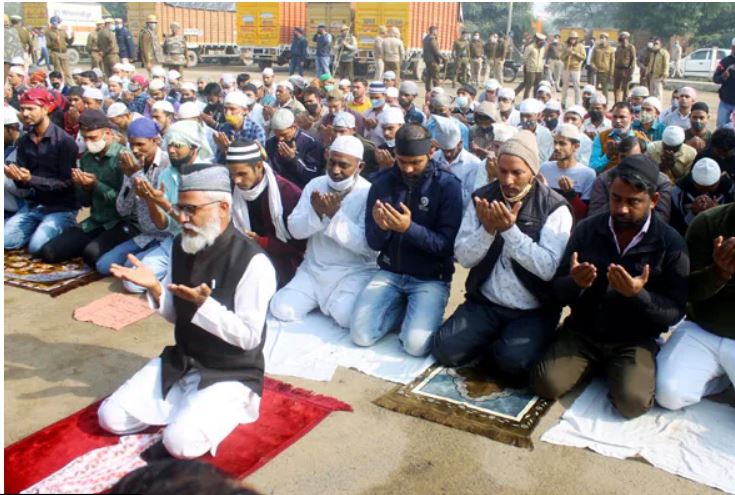
By Mohammad Javed Rasheedi
2021 is about to melt into 2022 in less than 48 hours. Majoritarian politics continued to hold its way over the country this year. But this year, it was not just Muslims but also Christians who felt the heat of Hindutva attacks across India as right-wing Hindu groups waged a culture war against them. Several churches have been attacked and statues of Jesus broken, the latest being in Ambala’s Army Cantonment, the scene of many a Rudyard Kipling work.
December saw targeted hate speeches against minorities. The one at Haridwar saw many participants vow to even take up weapons to redeem their faith by killing non-Hindus. The Hindu right-wing has waged war against Christians accusing them of religious conversion through their missionary work and Muslims for Love Jihad, an Islamophobic trope singling out Muslim men for falling in love with Hindu women and then converting them into Islam. However, such allegations targeting minorities have become a cornerstone of Hindu right-wing nationalism.
The Association for the Protection of Civil Rights, United Against Hate, and United Christian Forum jointly released a fact-finding report highlighting the series of attacks on churches and hate speech against Christians across India. According to the report, India has recorded more than 300 attacks on Christians and worship places within the first nine months of 2021.
Of the 305 incidents, 66 took place in Uttar Pradesh, 47 in Chhattisgarh and at least 32 in Karnataka.
While another report of the United Christian Forum had claimed that India reported more than 400 incidents of violence against Christians across the country. Among those, the incident involved storming churches, burning Christian literature, attacking schools and assaulting worshipers.
However, it is shocking that only 30 FIRs have been registered so far in these cases. On many occasions, restrictions were imposed on people to carry out religious ceremonies.
First on the list of attacks is the one on October 3, where a mob of 250-300 persons barged into a Roorkee church in Uttarakhand and attacked people, destroyed CCTV cameras, and vandalized church premises. Many reports said there were only 12 inside the church for prayers when the attack took place.
Apart from this, the attacks on churches were also reported from BJP-ruled states Haryana, Uttar Pradesh, Madhya Pradesh and Karnataka. And these attacks have taken place over allegations of religious conversion. Christians prayers meetings have also been stopped by the same Hindu mob who had stopped Jumma namaz in the so-called Millennium City, Gurugram. The city also saw an attack on a school’s Christmas celebration.
In the last week of 2021, the bank accounts of Mother Teresa’s Missionaries of Charity were frozen over FCRA claims, West Bengal Chief Minister Mamata Banerjee tweeted about the heartlessness behind the move affecting the charity of the outfit.
Some 22,000 patients and employees have been left without food and medicines, the West Bengal Chief Minister had tweeted.
The Missionaries of Charity was founded in 1950 by the late Mother Teresa, a Catholic nun from Macedonia, who moved to India and took care of the destitute and the poor and won the Nobel Peace Prize in 1979 for her work.
Hate speeches have been curtailed by some norms, keeping them among friends and family. The last week of 2021 saw more public hate speeches in the country. The controversial Dharam Sansad organized in Haridwar, other such events in Delhi and Chattisgarh saw where priests and leaders taking an oath to kill Muslims, and even urged Hindus to arm themselves against the Muslims to make India a Hindu Rashtra.
With next year’s assembly elections in Uttar Pradesh, Uttarakhand, Punjab, Goa and Manipur due shortly, the increase in such hate is an attempt at reviving polarisation.
The violence in Tripura, where VHP hoodlums attacked Muslims and vandalized some of their mosques and Friday prayers disruptions at designated places at Gurugram were also the prime example of rising hate against Muslims.
Anti-Hindu violence in parts of Bangladesh triggered violence in Tripura. The communal riots erupted on October 26 after a rally organized by the Vishwa Hindu Parishad to protest against the attacks on Hindus in Bangladesh turned violent.
The VHP and the Hindu Jagran Manch organized rallies in different parts of the state to protest against the violence in Bangladesh. Later, the VHP and other right-wing groups denied any role in the violence.
The anti-Hindu violence in Bangladesh, which erupted during the Durga Puja festival, was triggered by rumours that the Quran had been insulted in one of the pavilions set up for the celebrations. Seven people were killed, several temples desecrated, and hundreds of houses and business establishments of the Hindu minority were torched.
However, many Muslim groups alleged political conspiracy claiming that the minorities were being targeted in the north eastern state. There were many arrests and some journalists covering the riots in Tripura were also detained. Those who tweeted in favour of Tripura’s Muslims also found themselves being served notices by the state police.
The Uttar Pradesh government had faced severe criticism from the opposition over the killings of Kasganj youth Altaaf in mysterious circumstance. He had been arrested on suspicion of eloping with a Hindu woman. Again, the smoldering love jihad theory. The law and order in Uttar Pradesh, which had earlier won so much praise from PM Modi and other BJP leaders, has been roundly criticized by opposition parties in Uttar Pradesh.
The family of the deceased had alleged that he was tortured by police in the lockup, which led to his death. Police claimed the accused killed himself using the drawstring of his jacket’s hood when he went to the lockup washroom.
Apart from mob lynching, Muslim street vendors in Ahmedabad and some parts of Madhya Pradesh and other parts of the country have been threatened and disallowed from pursuing their livelihood. In Ahmedabad, the Hujarat High Court stepped in to tell off the civic authority to desist from such measures. In Assam, poor peasant families cultivating land for decades were brutally evicted only because they belonged to the Muslim minority. The point-blank shooting of Moinal Haque by police personnel caught on video and the subsequent death dance by a photographer with the remains indeed were a mirror for the crumbling facade of secular India, now overtaken by an aggressive mindless herd mentality spewing hate and violence.
Read Also: Masik Shivratri 2022: Know date, shubh muhurat, puja vidhi, significance
An empty desolate car park outside Sector 37 police station in Gurugram where Muslims had performed Friday prayers for more than a decade turned into a battleground of faith. Hindu right-wing groups staged protests, sloganeered during Friday prayers and held a Govardhan puja at the namaz site just to deny namaz here.
Instead of protecting victims of such incidents, the perpetrators not only enjoy immunity from the law, but also the administration in BJP-ruled states punishes victims. The use of false cases and arrests under draconian laws like UAPA are the preferred weapons.
Haryana news
Dushyant Chautala stood up for farmer’s cause; opposition failed
The Indian farmer constitutes 40 per cent of the country and an even higher percentage of its poor and as the available data points out, is under immense stress.
Published
4 years agoon
July 9, 2021By

By Prateek Som
The Indian farmer constitutes 40 per cent of the country and an even higher percentage of its poor and as the available data points out, is under immense stress. The modernization of the central farm laws is nothing but an adaptation of provisions which already exist in many states, including Punjab and Haryana. How come the three acts become anti-farmer in some states and why not in many others is something the activists themselves cannot explain.
Big states like Uttar Pradesh, Bihar, Maharashtra, West Bengal, Rajasthan are not even a part of the farmers’ agitation and there is no protest against the central or state government in these states, despite the fact that BJP is not in power in some of these states. More importantly, some agriculturists and several economists have been campaigning for abolishing MSP based procurement as it is unfairly tilted towards a few states like Punjab.
The Central government has neither abolished the MSP nor does it say anything against it in the laws. If, despite this, the impression is being spread that MSP is to be abolished, this is clearly mischievous. The activists are not only spreading the misinformation about the MSP abolition but they are asking for an unreasonable clause in the law for unlimited MSP based procurement which was never a part of the previous laws related to agriculture and APMC acts.
The Indian farm bills are in line with international precedence wherein a number of developing economies have been making changes to their agriculture policies since the 1990s to encourage private sector involvement which would provide a major fillip to the sector. The International Monetary Fund has also backed the recent farm acts as being an important step in the right direction. Despite all the supportive arguments in the favour of the laws, India has seen unprecedented protest in and around the capital as a result of political vendetta.
Politics of Yogendra Yadav and Gurnam Chaduni and its irrelevance to the farmer’s cause
Raising the farmer’s issues should be an act done collectively but the state farmer activists are trying to establish a monopoly in the leadership. They are not even active in all the parts of the state, but targeting only those districts with paddy belt of cropping pattern. Most of them are politically motivated.
In an interview given to NDTV, Yogendra Yadav came out as an aspiring candidate for Haryana CM post and he was advertised as the most fit politician for the position. He formulated his own party, ‘Swaraj’, after being expelled from AAP and lost badly in polls. It is a proof that he lacks mass support. A report by Divya Bhaskar states that farmer leader Gurnam Chaduni was accused of teaming up with political parties like Congress, AAP, SAD and some independent leaders and getting into a deal worth Rs 10 crore to topple the Khattar government in Haryana in return of Congress ticket for elections. There are allegations that Chaduni is collecting funds out of the collection drive for protests and hiding the funds from other leaders. He was also blamed for instigating farmers to disrupt the January 26 celebrations at the Red Fort. Haryana CM Khattar held Chaduni responsible for instigating the farmers that led to clashes between farmers and police at Karnal just before the Kisan Mahapanchayat programme. As a result of his politically motivated efforts, Chaduni was suspended by Samyukt Kisan Morcha from meeting politicians across country. In the 2019 assembly elections, Chaduni contested from Ladwa as an Independent candidate, but suffered a heavy defeat, garnering only 1,307 votes and losing his deposit.
Yogendra Yadav and Gurnam Chaduni are mere examples of how election failures like themselves are trying to garner the support of the commoners for their own political resurrection. The claim of being a leader of the farmers is in contravention with the inconsiderable support both Yadav and Chaduni got in the polls. The Shiromani Akali Dal that left the NDA government in the pursuance of state elections and under the disguise of farmer’s demands has made zero impact on the political ground of Punjab. Their biases can not only be seen from their actions but their cause and concern for two states out of 28. The threat posed by leaders like these to the democratic process of passing of a bill can be seen through the factual analysis of what the laws actually say versus the intentional misconceptions spread by such leaders.
Since an unlimited MSP based procurement is not in the law even today, it is not clear how this is even an issue. More importantly, putting this in the law means India will get tied to distortions that MSP based prices cause in perpetuity. The government has made it clear that procurement at MSP will continue and also that the mandis will not stop functioning. Farmers will have the option to sell their produce at other places in addition to the mandis. It is worth noting that only 6% of farmers actually sell their crops at MSP rates, according to the 2015 Shanta Kumar Committee’s report using National Sample Survey data. There are fears that contract farming will lead to land loss of the small and marginal farmers to big corporates. However, adequate protection of land ownership is in place to protect farmer interests. The act explicitly prohibits any sponsor firm from acquiring the land of farmers – whether through purchase, lease or mortgage. The point to note is that contract cultivation is voluntary in nature and farmers cannot be forced into an agreement.
How Dushyant Chautala is taking initiatives for farmers
Dushyant Chautala is the only state leader who has met Central leaders regarding the farmer demands – Prime Minister, Home Minister, Agriculture Minister along with other cabinet ministers Nitin Gadkari and Piyush Goyal. No other leader in India has met them specifically for farmers’ demands. That shows the concern and responsibility on the part of the JJP leader who is a leader of the masses.
In April 2020, Deputy CM Chautala addressed that the state government will procure the crops of the farmers in a better way while saving the state from the corona epidemic. As a result of this, even in the pandemic situation, mandis have been increased to 162 from 67 for the purchase of mustard at MSP. Haryana is the only state across the country which has started procurement of mustard crop in this pandemic. In November 2020, Dushyant assured the farmers that government will buy every grain of the crop. He made procurements for non-MSP crops to get the rate of MSP crops. He also announced formation of women Self-Help Groups in all villages on the lines of successful initiative in Hisar, to increase employment opportunities for women and showcase their talent at international level.
In February 2021, Dushyant made the announcement to buy 6 crops including wheat, mustard, pulses, sunflower, gram at MSP, barley is included for the first time. Haryana is the first state to offer MSP for barley. Every farmer is to be registered on the ‘Meri Fasal Mera Byora’ portal at MSP and payment amount will arrive in the farmer’s account within 48 hours. Along with recent announcements, the schemes like Mukhyamantri Parivar Samman Nidhi Scheme, Haryana Agricultural Machinary Grant Scheme, Pragatishil Kisan Samman Yojana, Pragatishil Kisan Trainer and Kisan Mitra Scheme to promote the inclusive growth of farmers in Haryana.
The main agenda of ongoing agitations
Amidst all the chaos, the agitations by activists like Yogendra Yadav and Gurnam Chaduni are for targeting Deputy CM Dushyant Chautala. It is a matter of record that many times they carried protests outside his residence and their intention and cause are suspicious to the core as they did not target any other leader in power like this.
The agitations in Haryana are mainly against the JJP and specifically targeted towards the leadership of Deputy CM Dushyant Chautala. The attempts of the farmer leaders to make Dushyant Chautala resign from the government are nothing but petty politics to destabilize the state government. If the threat to farmers is real, why the cause of the farmers is not taken up by the farmers from masses than some farmers from selected areas and that too under the leadership of politically motivated specific leaders only who have ties with the parties who are eyeing the upcoming elections?
The high-pitched farmer agitation is not just based on incorrect perceptions of what the new farm laws will result in – the abolition of APMC mandis and MSP-based procurement – they are also not about protecting the farmer in the long run. The agitation is purely an attempt to corner the stable functioning state government, to boost the sagging political fortunes of the activist leaders by deliberately misleading farmers, to run a personal vendetta against a young and dynamic leadership of Dushyant Chautala who is making efforts for the farmers and to give chance to Congress to come in power. That is why, before the activists decided to fuel the agitation, they focused on batting for spreading misinformation, have nothing to say about non-MSP crops/livestock in the state and have no future agenda for the inclusive growth and development of farmers. And to make the matters worse, they are trying to provoke the masses against the people in power for their vested political interests.
The author is an Advocate in Supreme Court of India and National Spokesperson of Jannayak Janta Party

BJP secures 7 wards as MCD by-election results announced, AAP wins 3

AI video row erupts as Congress leader shares clip showing PM Modi as chaiwala

Virat Kohli hits record 53rd ODI century as India build big total in Raipur

12 Maoists killed, 3 security personnel lose lives in major anti-Naxal operation in Chhattisgarh

Centre withdraws order on mandatory Sanchar Saathi pre-installation after protests

12 Maoists killed, 3 security personnel lose lives in major anti-Naxal operation in Chhattisgarh

IndiGo flight cancellations cross 200 as crew shortage and new duty norms hit operations

Virat Kohli hits record 53rd ODI century as India build big total in Raipur

Centre withdraws order on mandatory Sanchar Saathi pre-installation after protests

AI video row erupts as Congress leader shares clip showing PM Modi as chaiwala
Afghan Men Try To Hang With The Jet Engine Of The Aircraft in Kabul- Afghanistan News – Kabul News
Trending Top 10 News: 10000 Crore Fine on Flipkart, Apple to Launch Unique Feature, Hdfc Bank Job Ad
Trending Top 10 News: Nokia 6310, Apple sales, Bachpan ka Pyar Video Kid, Dainik Bhaskar IT Raid
Trending Top 10 News: Canada bans Indian flights, Rain in Delhi NCR, AIMIM Twitter hacked, Raj Kundra case
Trending Top 10 News: Shein India, Apple New Service, Pocket Oxygen, Oppo Launched New Phone
Trending
-
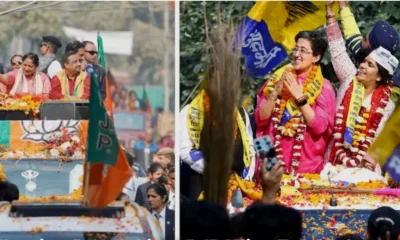
 India News23 hours ago
India News23 hours agoBJP secures 7 wards as MCD by-election results announced, AAP wins 3
-

 India News18 hours ago
India News18 hours agoAI video row erupts as Congress leader shares clip showing PM Modi as chaiwala
-

 Cricket news18 hours ago
Cricket news18 hours agoVirat Kohli hits record 53rd ODI century as India build big total in Raipur
-

 India News13 hours ago
India News13 hours ago12 Maoists killed, 3 security personnel lose lives in major anti-Naxal operation in Chhattisgarh
-

 India News18 hours ago
India News18 hours agoCentre withdraws order on mandatory Sanchar Saathi pre-installation after protests
-

 India News13 hours ago
India News13 hours agoIndiGo flight cancellations cross 200 as crew shortage and new duty norms hit operations

